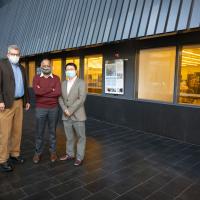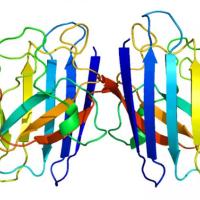6 min read
Phenomena that generate a type of low-frequency sound known as infrasound could become easier to detect and measure thanks to a new technique under development at the Georgia Tech Research Institute (GTRI). Infrasound, which cannot be heard by humans, is produced by tornados, earthquakes, explosions, wind turbines, the motion of large vehicles,…
5 min read
Organic semiconductors already provide the energy behind optical technologies inside television displays, solar cells, and lighting fixtures. Their molecular carbon-based structure makes them cheaper to produce, more flexible, of lighter weight, and more environmentally friendly than silicon-based or composite semiconductors. The future in more…
7 min read
A hotbed for semiconductor innovation, the Georgia Institute of Technology offers deep domain expertise in device and integration technologies, as well as high-assurance tools for chip security. The Institute, along with Georgia Tech Research Institute (GTRI), leads in areas such as emerging materials/devices, innovative circuit/architectures, and…
1 min read
Meet Courtney Crooks, Principal Research Scientist at the Georgia Tech Research Institute (GTRI) What is your field of expertise and why did you choose it? Although I have many interests within the field of psychology as evidenced through the various specialties that I have pursued throughout my professional career, my identity as a…
5 min read
Artificial Intelligence (AI) techniques, Computational Fluid Dynamics (CFD) simulations and data analytics procedures are being used jointly to help improve the availability of a critical U.S. Air Force helicopter while reducing maintenance costs and extending how long the aircraft can remain in service. The Virtual Sensing Technologies for…
5 min read
The global supply chain has been rocked by disruptions triggered largely by the coronavirus pandemic, resulting in a cascade of shortages on a host of products ranging from computer chips to medications. But supply chain disruptions also highlight the potential vulnerabilities in the U.S. manufacturing sector’s critical segments like…
0 min read
The world’s dependence on semiconductors came into sharp focus in 2021, when automotive manufacturing ground to a halt because of massive computer chip shortages – as Asian suppliers couldn’t keep up with demand for microelectronics – miniaturized electronic circuits and components that drive everything from smartphones to new vehicle components…
4 min read
Because humans and animals breathe and metabolize oxygen, they generate a variety of reactive oxygen species (ROS), or cell-damaging oxidants, as byproducts. Our bodies usually make enough antioxidants to counter that damage, but when that balance starts to favor oxidants, they can attack important biomolecules like proteins, nucleic acids, and…
5 min read
Ramiah Martin isn’t like other little girls, and that’s perfectly fine with her mother. “She is nothing short of a miracle,” Leanne Martin said of her daughter, who was facing long odds before her birth in December 2017, after being diagnosed with heart problems during a prenatal ultrasound. And the odds only got worse when Ramiah was born…
6 min read
Semiconductors are moving away from rigid substrates, which are cut or formed into thin discs or wafers, to more flexible plastic material and even paper thanks to new material and fabrication discoveries. The trend toward more flexible substrates has led to fabrication of numerous devices, from light-emitting diodes to solar cells and transistors…












